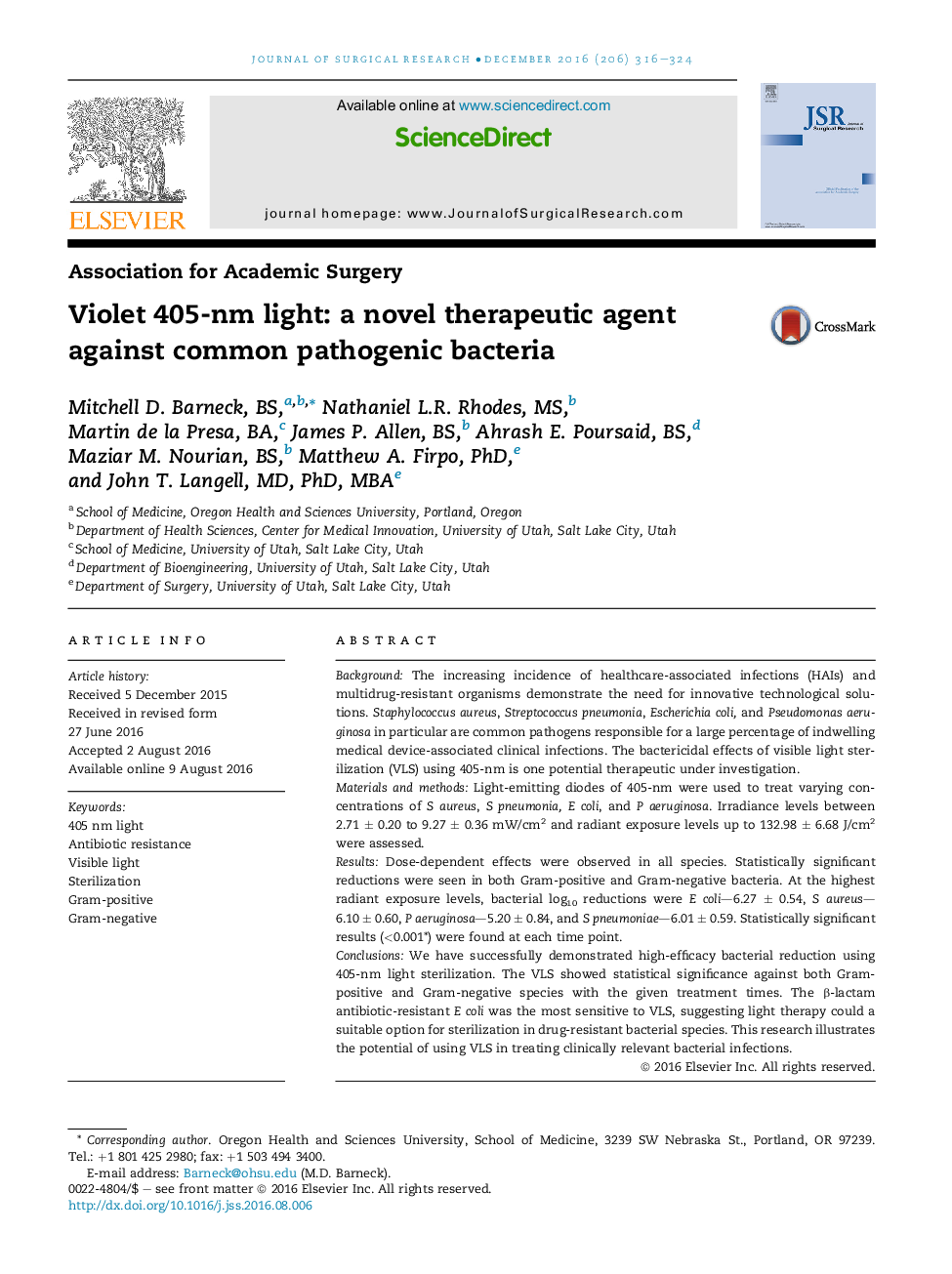| Article ID | Journal | Published Year | Pages | File Type |
|---|---|---|---|---|
| 5733961 | Journal of Surgical Research | 2016 | 9 Pages |
BackgroundThe increasing incidence of healthcare-associated infections (HAIs) and multidrug-resistant organisms demonstrate the need for innovative technological solutions. Staphylococcus aureus, Streptococcus pneumonia, Escherichia coli, and Pseudomonas aeruginosa in particular are common pathogens responsible for a large percentage of indwelling medical device-associated clinical infections. The bactericidal effects of visible light sterilization (VLS) using 405-nm is one potential therapeutic under investigation.Materials and methodsLight-emitting diodes of 405-nm were used to treat varying concentrations of S aureus, S pneumonia, E coli, and P aeruginosa. Irradiance levels between 2.71 ± 0.20 to 9.27 ± 0.36 mW/cm2 and radiant exposure levels up to 132.98 ± 6.68 J/cm2 were assessed.ResultsDose-dependent effects were observed in all species. Statistically significant reductions were seen in both Gram-positive and Gram-negative bacteria. At the highest radiant exposure levels, bacterial log10 reductions were E coli-6.27 ± 0.54, S aureus-6.10 ± 0.60, P aeruginosa-5.20 ± 0.84, and S pneumoniae-6.01 ± 0.59. Statistically significant results (<0.001*) were found at each time point.ConclusionsWe have successfully demonstrated high-efficacy bacterial reduction using 405-nm light sterilization. The VLS showed statistical significance against both Gram-positive and Gram-negative species with the given treatment times. The β-lactam antibiotic-resistant E coli was the most sensitive to VLS, suggesting light therapy could a suitable option for sterilization in drug-resistant bacterial species. This research illustrates the potential of using VLS in treating clinically relevant bacterial infections.
